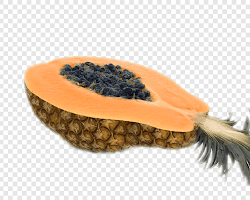
Hybrid foods and seeds are a rapidly growing industry, with the global market for hybrid seeds expected to reach \$100 billion by 2025. There are a number of reasons for this growth, including the increasing demand for food, the need for more sustainable agricultural practices, and the development of new technologies that can improve the yield and quality of hybrid crops.
**The Growing Demand for Food**
The global population is expected to reach 9.7 billion by 2050, which will put a strain on the world’s food supply. Hybrid foods and seeds can help to meet this demand by increasing the yield of crops. For example, hybrid corn can produce up to 30% more yield than conventional corn.
- *The Need for More Sustainable Agricultural Practices**:Read More: Heirloom Seed Saving Handbook: Your Personal Survival Seed Bank: https://amzn.to/43KUhTD

Conventional agricultural practices, such as the use of pesticides and herbicides, can damage the environment. Hybrid foods and seeds can help to reduce the environmental impact of agriculture by being more resistant to pests and diseases. For example, hybrid rice is resistant to the brown planthopper, a major pest that can damage rice crops.
**The Development of New Technologies**
New technologies, such as gene editing, are being developed that can improve the yield and quality of hybrid crops. For example, gene editing can be used to create crops that are resistant to drought or that have higher nutritional value.
The future of hybrid foods and seeds is bright. As the global population grows and the need for more sustainable agricultural practices increases, the demand for hybrid foods and seeds is likely to continue to grow. New technologies, such as gene editing, are also being developed that can further improve the yield and quality of hybrid crops.
**Benefits of Hybrid Foods and Seeds**
There are a number of benefits to using hybrid foods and seeds, including:
* Increased yield: Hybrid crops can produce up to 30% more yield than conventional crops.
* Improved resistance to pests and diseases: Hybrid crops are often more resistant to pests and diseases, which can reduce the need for pesticides and herbicides.
* Higher nutritional value: Some hybrid crops have higher nutritional value than conventional crops.
* Increased sustainability: Hybrid crops can help to reduce the environmental impact of agriculture by being more resistant to pests and diseases.
**Drawbacks of Hybrid Foods and Seeds**
There are also a few drawbacks to using hybrid foods and seeds, including:
* Higher cost: Hybrid seeds can be more expensive than conventional seeds.
* Patents: Some hybrid seeds are patented, which means that farmers must buy new seeds each year.
* Genetic diversity: The use of hybrid seeds can reduce genetic diversity in crops, which can make them more susceptible to pests and diseases.
Overall, the benefits of using hybrid foods and seeds outweigh the drawbacks. Hybrid crops can help to meet the growing demand for food, reduce the environmental impact of agriculture, and improve the nutritional value of food.
No comments:
Post a Comment
Welcome to Leave a Comment